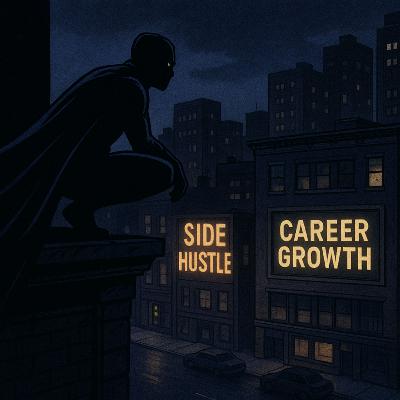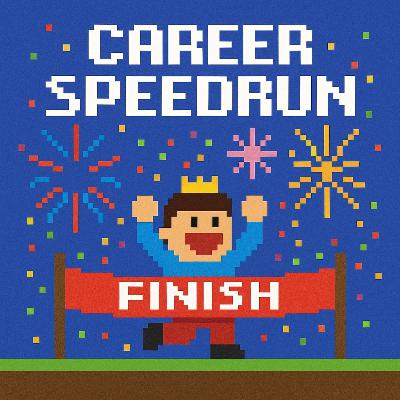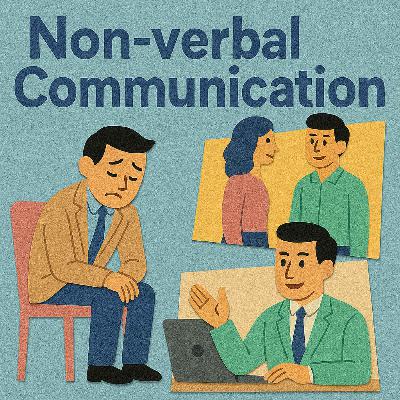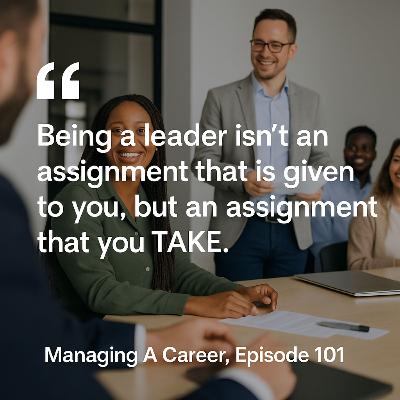Creating a Career Vision When You Don't Know What's Possible - MAC102
Description
We've recently gone through a reorganization at my job, and with that change, I now have several new team members reporting to me. In my one-on-one meetings, I like to focus on more than just status updates—I emphasize career development. One of the tools I’ve consistently found to be effective is the Individual Development Plan, or IDP. If you’ve been following this podcast, you may remember Episode 37 (https://managingacareer.com/37) where I broke down the Vision and Roadmap section of the IDP. It’s a framework I believe in deeply.
But here’s the thing: many of my new team members are struggling with the very first step—creating a compelling Career Vision. And if they’re struggling, I know they’re not alone. So in this week’s episode, I want to focus on how to help people—whether you’re managing others or thinking about your own path—craft a meaningful vision for their career.
WHY THIS IS HARD
In Episode 37, I described the Career Vision as a statement about where you want your career to go—looking as far into the future as you can reasonably imagine. It's a personal declaration of what success and fulfillment look like for you.
But here’s the challenge: if you don’t know what your options even are, this step can feel frustrating—or worse, paralyzing. Instead of inspiring clarity, it can leave you feeling lost and without direction. And let’s be honest—most of us are so heads-down in the daily grind of doing our job that we rarely pause to look up. We rarely make time to think about that longer view. But those who do—who take a moment to lift their gaze and imagine something beyond today’s task list—are the ones who position themselves for real, lasting growth.
SHIFT YOUR STARTING POINT
If you already have that clarity and focus—fantastic. You probably don’t need this episode... but I’ll bet you know someone who does. So feel free to pass it along.
For the rest of you, if you're struggling to define your Career Vision, here’s where I want to challenge the usual approach. Most people start by looking inward—asking questions like What drives me? What motivates me? And yes, that’s important... but it’s not the first step. When you’re still trying to define the destination, the journey starts by looking outward. Not because you're searching for answers—at least, not yet—but because you're searching for inspiration.
START EXPLORING EXTERNALLY
Start by reaching out to people within your organization—especially those who are more senior than you. But don’t limit yourself to only those on a traditional upward path. Sometimes, the next step in your career isn’t up—it’s sideways. A lateral move into a different role can be the beginning of a powerful career shift, or even a full pivot. (If that idea intrigues you, go back and listen to Episode 93 (https://managingacareer.com/93) where I dig deeper into career pivots.)
Set up informal coffee chats or virtual meetings with colleagues who do something different than you. Use those conversations to get into the weeds: What does their day-to-day actually look like? How did they get into that role? What parts of their job do they find genuinely fulfilling?
You’re not committing to anything yet—this is an exploration phase. And at this point, quantity matters. The more people you talk to—and the more varied their roles—the more likely you are to uncover something that sparks real inspiration.
A LOW-PRESSURE OPTION
Or maybe you're not quite ready to start reaching out to others—and that’s okay. If you’re more introverted, or just want to start quietly, there’s another route: job postings. Not because you're planning to apply right now, but because they give you a snapshot of what’s out there and what it takes to get there.
Start by using filters to target the kinds of roles you might one day aspire to. Look at postings that require three, five, ten—even fifteen—years more experience than you currently have. That kind of range helps you see not just a job, but a progression. Focus especially on postings that include growth-oriented language—words like strategy, leadership, vision, or cross-functional. Those roles usually reflect soft skill development, which is where the real career growth happens. As you read, take note of recurring skills, responsibilities, and expectations. You’re not just scanning for jobs—you’re gathering clues to help shape your future.
FOLLOW THE THINKERS
Another great source of insight? People who publish their thinking publicly. Follow professionals in your industry who share their experiences through podcasts, blogs, or on LinkedIn. These voices often offer a behind-the-scenes look at how others approach their careers—and they can expose you to paths and mindsets you might not have considered.
You can also explore industry conferences, even if you’re not ready to attend every keynote. Sometimes the real value is in the “hallway track”—those informal conversations between sessions where people talk candidly about their roles, their challenges, and what they’re working toward.
The common thread here is exposure. The more sources you explore, the more perspectives you gather, and the better your understanding becomes of what’s actually possible in your field. Inspiration often comes from seeing what someone else is doing and realizing, Hey, I could do that too.
ORGANIZE WHAT YOU’VE LEARNED
At this point, you might be thinking, Okay, I’ve gathered a lot of input—but what do I actually do with it? Here’s a simple method to start making sense of it all.
For every conversation, job posting, article, or conference interaction, create a digital or physical sticky note. On each one, jot down a few key pieces of information: the role (not the title—titles vary widely between companies), the core skills involved, one or two things that genuinely excite you about the role, and one or two things you’d absolutely dread.
That last part is just as important as the first. You’re not making any decisions yet—you’re just capturing reactions. Over time, as you collect more of these notes, you’ll start to see patterns. Some roles will light you up. Others won’t. This is the beginning of classification—filtering what’s possible into what’s appealing.
ELIMINATE & EVALUATE
<p style="margin: 0in; font-family: Calibri; font-size: 1























